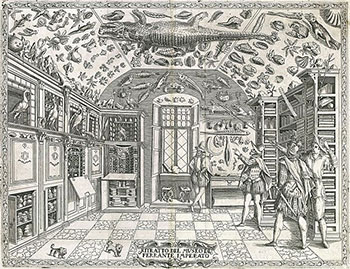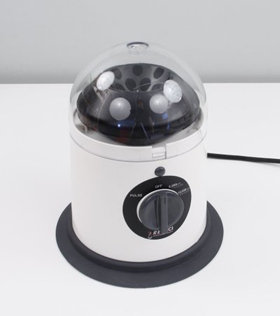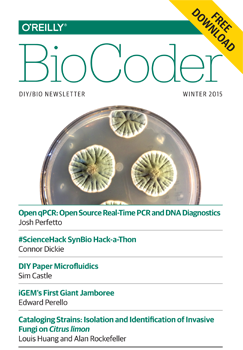- 1746 Slippy Map of London — very nice use of Google Maps to recontextualise historic maps. (via USvTh3m)
- TPP Comic — the comic explaining TPP that you’ve been waiting for. (via BoingBoing)
- Synthetic Biology Investor’s Lament — some hypotheses about why synbio is so slow to fire.
- vizcities — open source 3D (OpenGL) city and data visualisation platform, using open data.
"DIY biology" entries

Imagining a future biology
We need to nurture our imaginations to fuel the biological revolution.
Download the new issue of BioCoder, our newsletter covering the biological revolution.
 I recently took part in a panel at Engineering Biology for Science & Industry, where I talked about the path biology is taking as it becomes more and more of an engineering discipline, and how understanding the path electronics followed will help us build our own hopes and dreams for the biological revolution.
I recently took part in a panel at Engineering Biology for Science & Industry, where I talked about the path biology is taking as it becomes more and more of an engineering discipline, and how understanding the path electronics followed will help us build our own hopes and dreams for the biological revolution.
In 1901, Marconi started the age of radio, and really the age of electronics, with the “first” trans-atlantic radio transmission. It’s an interesting starting point, because important as this event was, there’s good reason to believe that it never really happened. We know a fair amount about the equipment and the frequencies Marconi was using: we know how much power he was transmitting (a lot), how sensitive his receiver was (awful), and how good his antenna was (not very).
We can compute the path loss for a signal transmitted from Cornwall to Newfoundland, subtract that from the strength of the signal he transmitted, and compare that to the sensitivity of the receiver. If you do that, you have to conclude that Marconi’s famous reception probably never happened. If he succeeded, it was by means of a fortunate accident: there are several possible explanations for how a radio signal could have made it to Marconi’s site in Newfoundland. All of these involve phenomenon that Marconi couldn’t have known about. If he succeeded, his equipment, along with the radio waves themselves, were behaving in ways that weren’t understood at the time, though whether he understood what was happening makes no difference. So, when he heard that morse code S, did he really hear it? Did he imagine it? Did he lie? Or was he very lucky? Read more…

Announcing BioCoder issue 6
BioCoder 6: iGEM's first Giant Jamboree, an update from the #ScienceHack Hack-a-thon, the Open qPCR project, and more.
Once again, we’re interested in your ideas and in new content, so if you have an article or a proposal for an article, send it in to BioCoder@oreilly.com. We’re very interested in what you’re doing. There are many, many fascinating projects that aren’t getting media attention. We’d like to shine some light on those. If you’re running one of them — or if you know of one, and would like to hear more about it — let us know. We’d also like to hear more about exciting start-ups. Who do you know that’s doing something amazing? And if it’s you, don’t be shy: tell us.
Above all, don’t hesitate to spread the word. BioCoder was meant to be shared. Our goal with BioCoder is to be the nervous system for a large and diverse but poorly connected community. We’re making progress, but we need you to help make the connections.

Robots in the lab
Hacking lab equipment to make it programmable is a good first step toward lab automation.

An automated centrifuge at Modular Science — click here for instructions to hack one yourself.
In the new issue of BioCoder, Peter Sand writes about Hacking Lab Equipment. It’s well worth a read: it gives a number of hints about how standard equipment can be modified so that it can be controlled by a program. This is an important trend I’ve been watching on a number of levels, from fully robotic labs to much more modest proposals, like Sand’s, that extend programmability even to hacker spaces and home labs.
In talking to biologists, I’m surprised at how little automation there is in research labs. Automation in industrial labs, the sort that process thousands of blood and urine samples per hour, yes: that exists. But in research labs, undergrads, grad students, and post-docs spend countless hours moving microscopic amounts of liquid from one place to another. Why? It’s not science; it’s just moving stuff around. What a waste of mental energy and creativity.
Lab automation, though, isn’t just about replacing countless hours of tedium with opportunities for creative thought. I once talked to a system administrator who wrote a script for everything, even for only a simple one-liner. (Might have been @yesthattom, I don’t remember.) This practice is based on an important insight: writing a script documents exactly what you did. You don’t have to think about, “oh, did I add the f option on that rm -r / command?”; you can just look. If you need to do the same thing on another system, you can reproduce what you did exactly.

Announcing BioCoder issue 3
Advances in biology and biotechnology are driving us in exciting new directions — be part of the revolution!
We’re excited about the third issue of BioCoder, O’Reilly’s newsletter about the revolution in biology and biotechnology. In the first article of our new issue, Ryan Bethencourt asks the question “What does Biotechnology Want?” Playing with Kevin Kelly’s ideas about how technological development drives human development, Bethencourt asks about the directions in which biotechnology is driving us. We’re looking for a new future with significant advances in agriculture, food, health, environmental protection, and more.
That future will be ours — if we choose to make it. Bethencourt’s argument (and Kelly’s) is that we can’t not choose to make it. Yes, there are plenty of obstacles: the limits to our understanding of biology and genetics, the inadequate tools we have for doing research, the research institutions themselves, and even fear of the future. We’ll overcome these obstacles; indeed, if Bethencourt is right, and biology is our destiny, we have no choice but to overcome these obstacles. The only question is whether you’re part of the revolution or not.
Read more…

Biohacking and the problem of bioterrorism
Natural bioterrorism might be the bigger threat, and the value of citizens educated in biosciences can't be overstated.
You don’t get very far discussing synthetic biology and biohacking before someone asks about bioterrorism. So, let’s meet the monster head-on.
I won’t downplay the possibility of a bioterror attack. It’s already happened. The Anthrax-contaminated letters that were sent to political figures just after 9/11 were certainly an instance of bioterrorism. Fortunately (for everyone but the victims), they only resulted in five deaths, not thousands. Since then, there have been a few “copycat” crimes, though using a harmless white powder rather than Anthrax spores.
While I see bioterror in the future as a certainty, I don’t believe it will come from a hackerspace. The 2001 attacks are instructive: the spores were traced to a U.S. biodefense laboratory. Whether or not you believe Bruce Ivins, the lead suspect, was guilty, it’s clear that the Anthrax spores were developed by professionals and could not have been developed outside of a professional setting. That’s what I expect for future attacks: the biological materials, whether spores, viruses, or bacteria, will come from a research laboratory, produced with government funding. Whether they’re stolen from a U.S. lab or produced overseas: take your pick. They won’t come from the hackerspace down the street. Read more…


Four short links: 19 February 2014
Slippy History, TPP Comic, SynBio Barriers, and 3D City Viz

Academic biology and its discontents
Disaffected grad students and postdocs increasingly turn to DIYbio to do work that makes a difference.
When we started BioCoder, we assumed that we were addressing the DIYbio community: interested amateur hobbyists and experimenters without much formal background in biology, who were learning and working in independent hackerspaces.
A couple of conversations have made me question that assumption — not that DIYbio exists; it’s clearly a healthy and growing movement, with new labs and hackerspaces starting in most major cities. But there’s another group mixed in with the amateurs, with a distinctly different set of capabilities and goals. DIYbio doesn’t mean exactly what we thought it did.
That group is what I broadly call “disaffected grad students and postdocs.” They’ve got training, loads of it. But they’ve spent the last few years working in a laboratory under a faculty member, furthering that faculty member’s agenda. They have their own ideas and their own research projects, but they can’t work on them within the context of academic biology. They’re funded by a grant, and the grant will only pay for certain things. And, as Anthony Di Franco points out in “Superseding Institutions in Science and Medicine” (in the current issue of BioCoder), grants are primarily given to people who already know what they’re going to find, and that is not how you get truly innovative and creative research. Read more…

Craig Venter on moving at the speed of light
My discussion with Venter left me with a sense of wonder and excitement for biotechnology and the future.
Last week I had the privilege of speaking with J. Craig Venter at the Hillside Club in Berkeley, as part of the Bay Area Science Festival. Dr. Venter is a pioneer in biotech, from sequencing the Human Genome to creating a synthetic organism. It was an exciting moment for me, personally, as he thinks in terms of moonshots and succeeds often (through the failures).
Dr. Venter was in Berkeley as part of his tour to promote his new book, Life at the Speed of Light, which was inspired by Erwin Schroedinger’s question in 1943, “What is Life?” That question set Dr. Venter off on a life-long quest: first, to first take life apart and then rebuild it; to test his understanding of the machinery of life; and, ultimately, prove that he and humanity could rebuild life from scratch. The machinery of life still involves a lot of mystery, even for the simplest synthetic organisms. When when they were building the first synthetic organism, they focused on the minimum number of genes needed to create a viable life form. They found that they needed to include 50 genes with unknown functions. Without these genes, they couldn’t get the organism to “boot up.” They are clearly necessary, but why? What do they do? We still don’t know.
Venter also shared his thoughts on life on Mars. He thinks it is likely that life has existed on Mars, as Earth and Mars regularly exchange large amounts of particulate matter filled with bacteria. He’s planning a project to sequence Martian DNA (which he believes exists), with a plan to send the digital DNA sequence back to Earth for re-synthesis. Read more…

The first two weeks of BioCoder
Our readers are the largest group of DIY biologists ever assembled.
We’ve been having a great time — more than 6,000 downloads, almost 13,000 visits to the landing page, and we don’t know how many people have shared it. Ryan Bethencourt observed that our readers are the largest group of DIY biologists that has ever been assembled. This is big — and we still don’t know how big.
Thanks for a great start! We’re looking forward to a second issue in mid-Jauary. And if you haven’t yet read the first issue of BioCoder, it’s time for you to check it out.

The biocoding revolution
The potential for synthetic biology and biotechnology is vast; we all have an opportunity to create the future together.
What is biocoding? For those of you who have been following the biotechnology industry, you’ll have heard of the rapid advances in genome sequencing. Our ability to read the language of life has advanced dramatically, but only recently have we been able to start writing the language of life at scale.
The first large-scale biocoding success was in 2010, when Craig Venter (one of my scientific heroes) wrote up the genome of an entirely synthetic organism, booted it up and created de novo life. Venter’s new book, Life at the Speed of Light, discusses the creation of the first synthetic life form. In his book and in video interviews, Venter talks about the importance of ensuring the accuracy of the DNA code they designed. One small deletion of a base (one of the four letters that make up the biological equivalent of 1s and 0s) resulted in a reading frame shift that left them with gibberish genomes, a mistake they were able to find and correct. One of the most amusing parts of Venter’s work was that they were able to encode sequences in the DNA to represent each letter of the English alphabet. Their watermark included the names of their collaborators, famous quotes, an explanation of the coding system used, and a URL for those who crack the code written in the DNA. Welcome to the future — and let me know if you crack the code!
Biocoding is just the beginning of the rise of the true biohackers. This is a community of several thousand people, with skill sets ranging from self-taught software hackers to biology postdocs who are impatient with the structure of traditional lab work. Read more…
